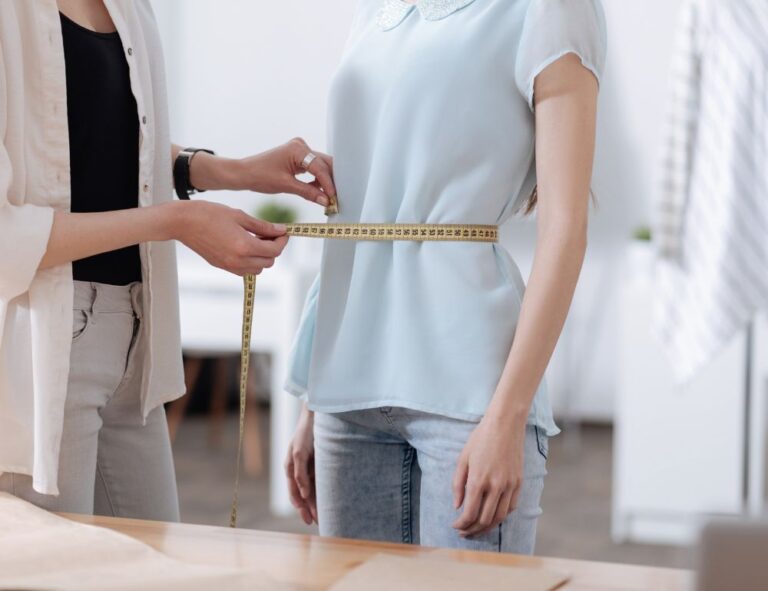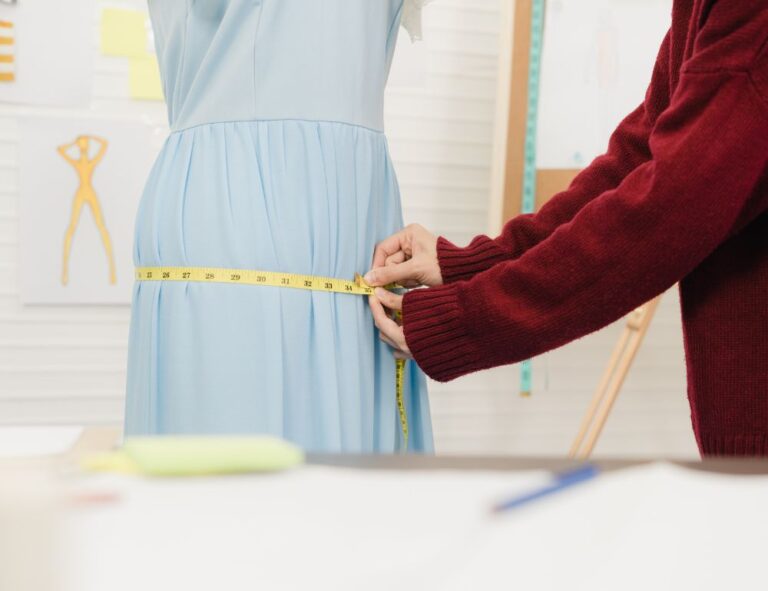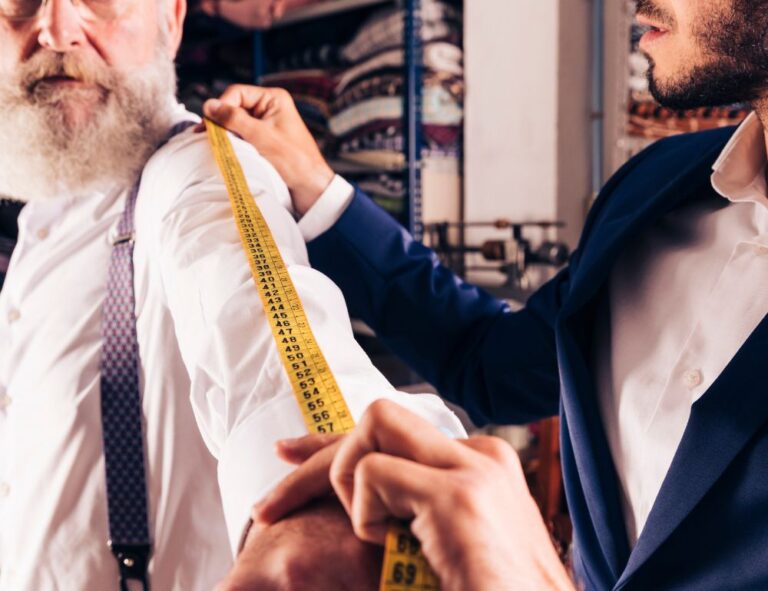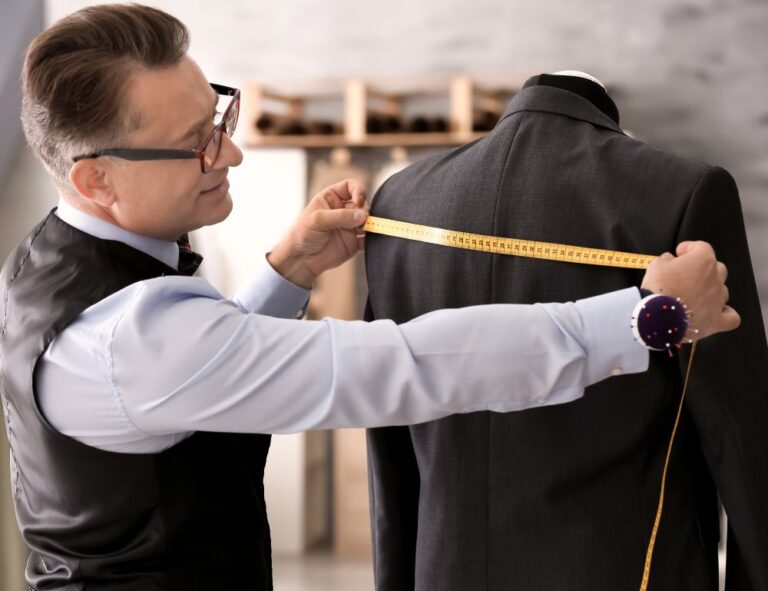India's Best Measuring Tape Manufacturer
- info@measuringtape.in
- +91-9811223553
- +91-9899362660
In an era where fast fashion reigns, there’s something timeless and special about custom clothing. Whether it’s for a tailored suit, a bespoke dress, or personalized fashion pieces, having garments that fit your body perfectly can make a world of difference in how you look and feel. One key step in ensuring that your custom clothing fits like a glove is getting accurate body measurements.
If you’re new to measuring yourself or want a refresher, this step-by-step guide will help you take precise measurements using a simple measuring tape. Armed with the right measurements, you can communicate with your tailor or use online custom clothing services to achieve the perfect fit.
1. The Essential Tool: A Gentle Measuring Instrument
Before you begin, ensure you have a soft, flexible measuring tape. Unlike a rigid ruler, a soft measuring tape will easily curve around the contours of your body for an accurate measurement. You can find these in sewing kits or purchase them separately. It’s also helpful to have a mirror nearby or a friend to assist you for an even more accurate reading.
2. Wear Tight-Fitting or Minimal Clothing
To get precise measurements, it’s important to wear tight-fitting clothing, like leggings and a fitted top, or just measure over underwear. Bulky clothes or layers can add extra inches, which may throw off your final garment fit.
3. How to Measure Your Chest/Bust
- Stand naturally: Stand straight with your shoulders relaxed and your arms at your sides.
- Wrap the tape around the fullest part of your chest: Place the tape under the arms and across the widest part of the body for males, and around the bust for women part of the chest.
- Ensure the tape is level: Verify in the mirror that the tape is not drooping in the rear and is parallel to the floor.
- Don’t pull the tape too tight: The tape should be snug but not cutting into the skin. Allow some extra space for comfort in your custom clothing.
Write down your measurement in inches or centimeters, depending on the sizing system your tailor or designer uses.

4. How to Measure Your Waist
- Find your natural waistline: This is usually the narrowest part of your torso and is located just above your belly button. It’s where your body naturally folds when you bend sideways, not necessarily where your clothes sit.
- Wrap the tape around your waist: Again, ensure that the tape is parallel to the ground and sits flat against your skin.
- Exhale gently: Don’t suck in your stomach or push it out; take the measurement when your stomach is in a natural, relaxed position.
Record the number, and remember that a good fit in custom clothing will allow for comfort without being too loose.

5. How to Measure Your Hips
- Stand with your feet together: Accurately measuring the broadest portion of your hips is ensured by keeping your legs close together.
- Wrap the tape around the fullest part of your hips: This is the widest part of your buttocks, typically located 7 to 9 inches below your waist.
- Ensure the tape is level: Use a mirror to ensure the tape is level, not riding up in the back or drooping too low in the front.
Either in inches or millimeters, note the measurement.

6. How to Measure Your Inseam
The inseam is crucial for pants, trousers, and jumpsuits. It measures the distance from your inner thigh to your ankle.
- Stand up straight: Have someone help you if possible.
- Measure from the crotch to your ankle: Place the measuring tape at the top of your inner thigh, right at the crotch seam, and measure down to your ankle bone.
Record this number, as it determines the perfect length for trousers or full-length clothing items.

7. How to Measure Arm Length
For shirts, jackets, or dresses with sleeves, knowing your arm length is key to avoiding sleeves that are too long or short.
- Bend your arm slightly: This mimics the natural bend when you’re wearing long sleeves.
- Measure from the shoulder to your wrist: Start the tape at the edge of your shoulder (where the sleeve seam would be) and measure down to your wrist bone.
Make sure the tape follows the natural curve of your arm, especially if it’s slightly bent. This will give you an accurate measurement for sleeve length.

8. How to Measure Shoulder Width
If you’re getting a jacket, coat, or blouse made, measuring your shoulder width ensures a tailored fit.
- Stand straight and relaxed: Ask someone to measure the distance between the ends of your shoulders, beginning at the point where your arm and shoulder connect.
This measurement is crucial for ensuring a structured, polished look in jackets and coats.

9. Additional Tips for Accurate Measurements
- Double-check your measurements: To be sure, measure every region twice if you’re not sure.
- Use a flat surface to record: When writing down your measurements, ensure that the measuring tape isn’t twisted or bunched up, which could distort the numbers.
- Consult sizing charts: If you’re using an online service, cross-check your measurements with their sizing guide to avoid any discrepancies.
Accurately measuring yourself for custom clothing is easier than it seems. By following this step-by-step guide with a soft measuring tape, you can ensure that your tailored outfits fit flawlessly, making you look and feel your best. Whether you’re working with a local tailor or ordering custom pieces online, precise measurements are the foundation of a great fit. So grab your measuring tape, follow these simple steps, and get ready to elevate your wardrobe with perfectly fitting cusom clothing!
